Machinery for Ecological Thinking
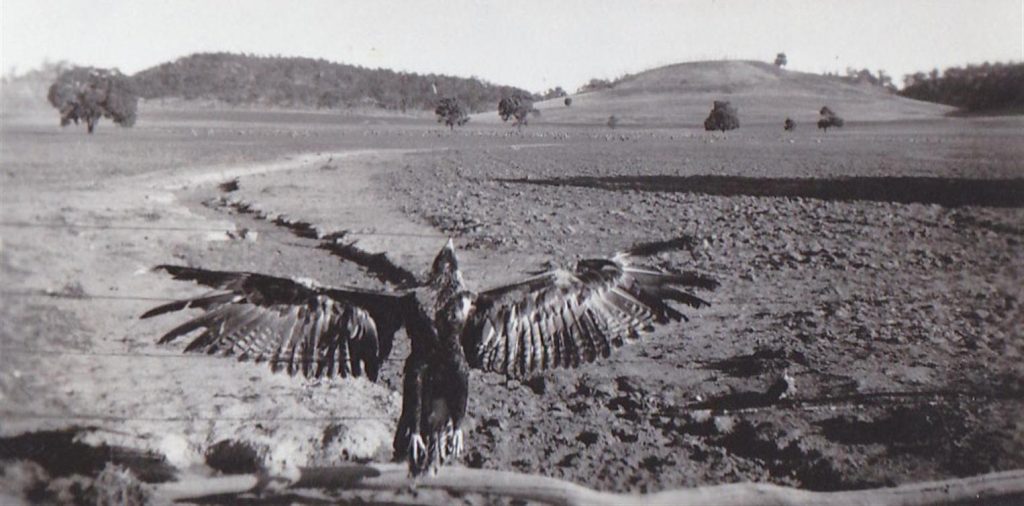
How might the particular features of a piece of agricultural machinery record profound ecological ideas? At the National Landcare Awards in September, former prime minister Bob Hawke presented farmer Colin Seis with the prestigious 2014 Bob Hawke Landcare Award. The award celebrates Colin’s revisioning of agriculture as an ecological activity, and recognises the significance of ‘pasture cropping’, a revolutionary new method of grain and pasture production developed by Colin on ‘Winona’, his farm on the central tablelands of New South Wales.
Collections of agricultural machinery held by the National Museum of Australia reveal much about the dominant perceptions and worldviews that drove the dramatic reshaping of inland Australia into modern, industrial farmland. Such equipment record triumphant stories of overcoming natural constraints to meet demands for closer settlement and deliver produce to national and international markets. When I contacted Colin to talk about his Landcare win, he told me about the seeding device he’d invented specifically for pasture cropping. What patterns of ecological thinking, I wondered, would the particular characteristics of Colin’s invention chronicle and convey?
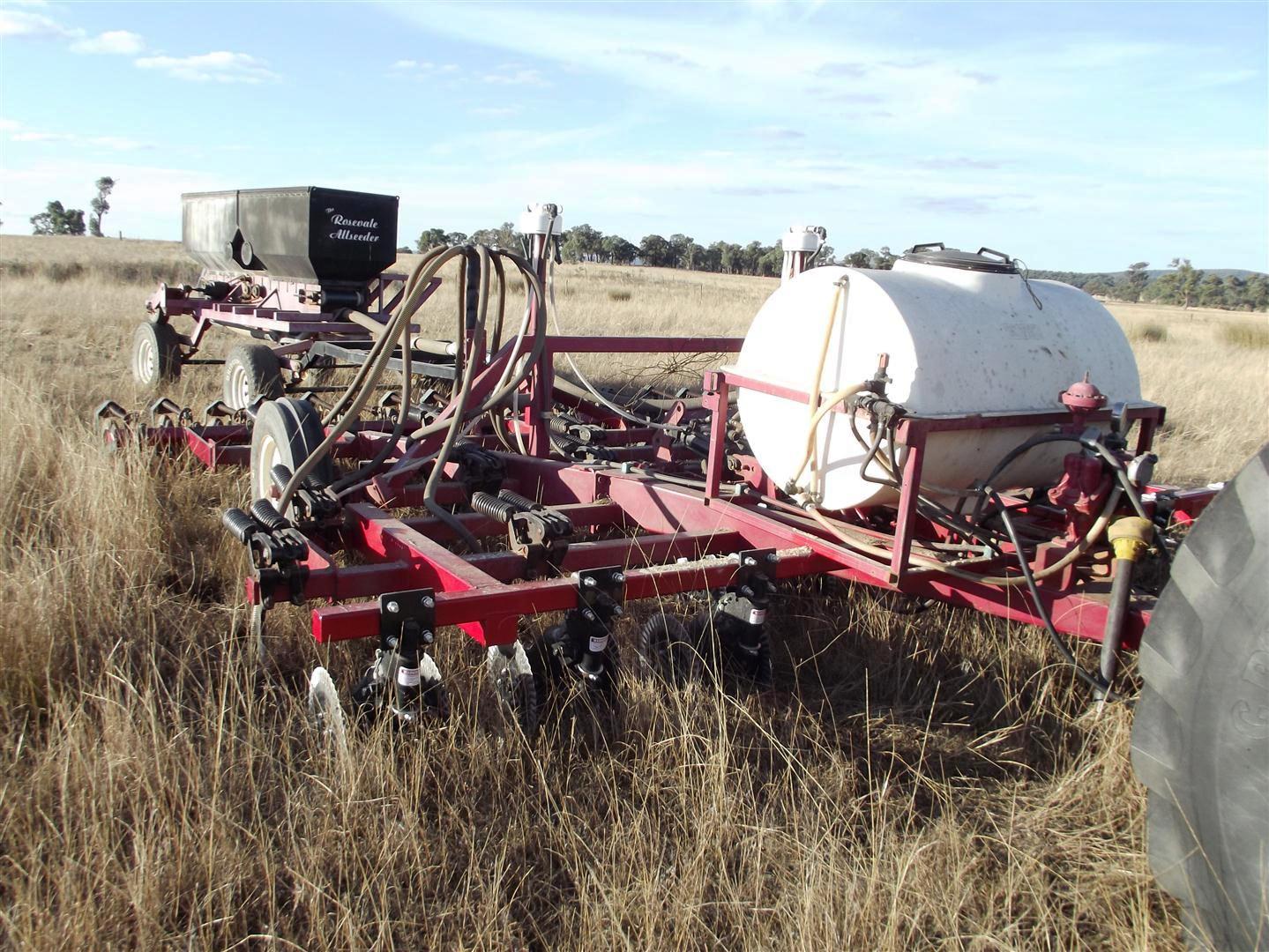
Colin modified a scarifier (used for loosening soil) to build the pasture cropping seeder shown in the photograph above. Each winter, he drags the device behind a tractor to plant annual crops directly into dormant grasslands of various perennial species. In contrast with mainstream, industrial farming systems, Winona’s paddocks are never bared with herbicides or churned by wide ploughs. At the front of the machine, fine steel discs cut through the heavy grass mulch and into the soil. The openings make way for a narrow tyne, which parts the soil and creates a space for grains of wheat, oats, barley, rye, lupins or canola, pushed by air through tubes that extend from the seed trailer, attached to the rear of the seeder. The narrowness of the tyne ensures minimal soil disturbance, thereby preventing weeds. From a white tank at the front, pipes drizzle compost tea—a brew brimming with microbes and carefully prepared by Colin from rich compost, seaweed meal, molasses and humic acid—to energise the seeded earth.
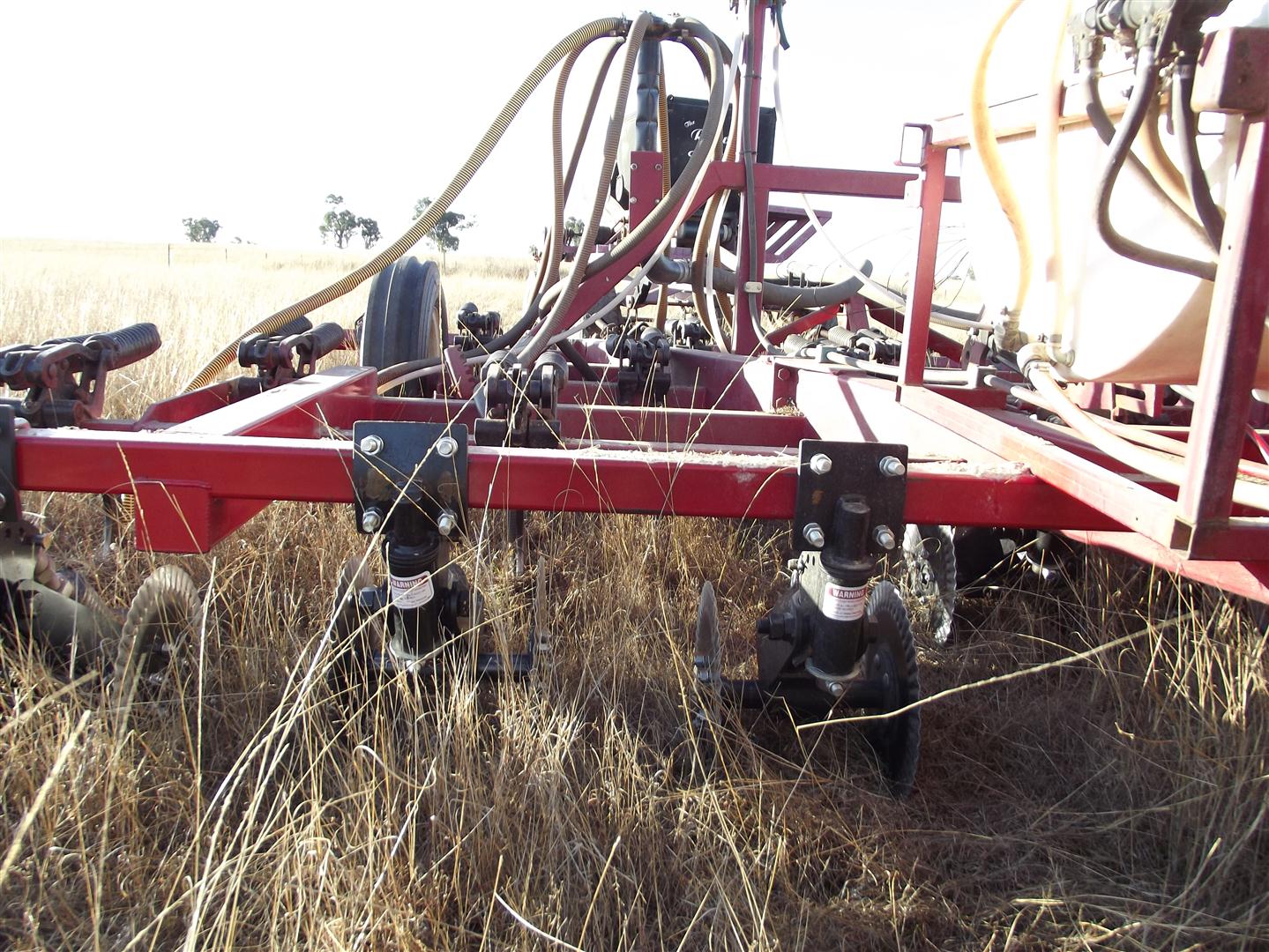
After the air seeder deposits the grain and compost tea into the narrow incision, a bank of press wheels run along each seeded line, gently compressing the surface to ensure that the grain is held closely by the soil, thereby increasing germination rates.
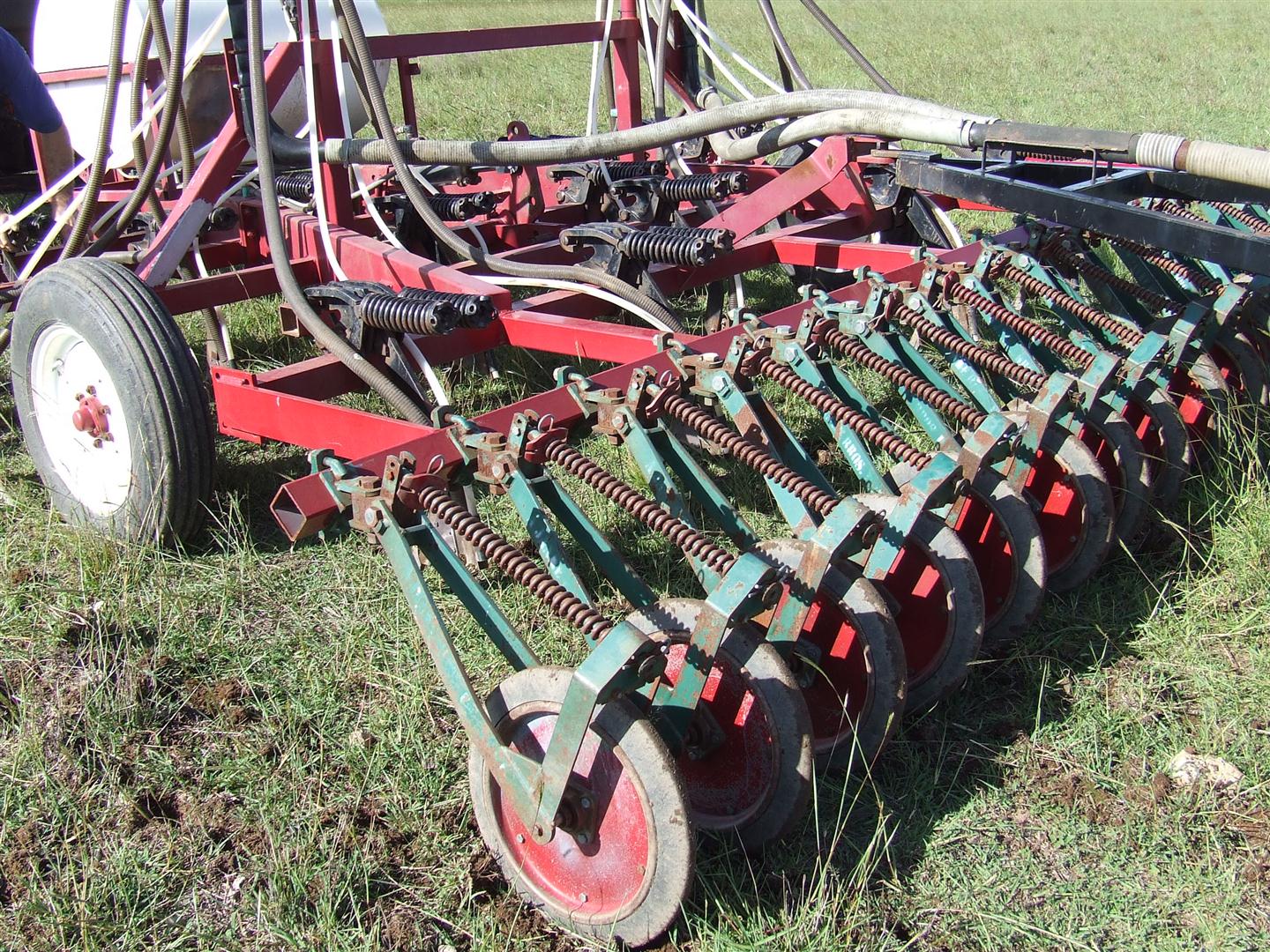
As crop plants rise above native grasses, a dynamic and flourishing ecological community prevents the diseases and insect attacks common within the broad monocultures of industrial farming systems. Inside the paddocks of Winona, insects numbers have increased sixfold, and insect diversity by one quarter, since Colin began pasture cropping in the early 1990s. Because Colin doesn’t spray pesticides, an abundance of spiders and wasps survive to predate troublesome insects. Perennial grasses feed soils, offering organic matter and sugars to regenerating populations of microbes and fungi, bolstering fertility and the capacity of plants to access nutrients. Nourishment offered by the diverse life present within each paddock allows Colin to achieve respectable crop yields while using under a third of the fertiliser applied to conventionally grown crops.
At first glance, Colin’s pasture cropping seeder might appear similar to this eight-furrow ‘stump-jump’ plough in the Museum’s National Historical Collection. Both are easily recognisable as items of agricultural equipment. The contrast lies in the opposing ideas embedded within each object, in the regenerative ecological thinking recorded by the fine cutting discs and gentle press wheels of the air seeder, and the ecologically destructive patterns of thought and behaviour recorded in the wide blades and tight springs of the stump-jump plough.
Agricultural scientists used this plough on an experimental station in Canberra throughout the 1940s and 1950s. The stump-jump plough is a celebrated Australian invention, developed in the 1870s. In the late nineteenth century, Australian farmers eagerly adopted new technologies than enabled the hasty transformation of biologically diverse grassy woodlands into simplified monocultures of imported crop species. The new plough’s great innovation was a linkage mechanism that allowed each ploughshare to rise above roots, stumps, and rocks, and thereby avoid damage to horses and equipment. The stump-jump plough became a national icon, widely honoured for its capacity to jump over stumps and stones, to transcend the particular characteristics of Australian places.
The clearing of indigenous biological communities held devastating consequences for land and climate. Such efforts induced unprecedented erosion events, and transferred immense volumes of carbon from Australian soils into the global atmosphere. Since 1850, the conversion of grasslands and forests into farmland has delivered 44 billion tons of carbon into the air, representing one tenth of anthropogenic carbon emissions.[1] The photograph at the top of this blog post shows an eroding, carbon-poor wheat paddock on Winona in 1939, the dead eagle mounted on the wire fence a declaration of victory over indigenous forces deemed threatening to primary production. Erasure of perennial grassland, regular disturbance by plough, and the repeated sowing of crop monocultures had eliminated soil microbes, fungi, and humus, and destroyed soil structure. In time, the paddock’s gully became two metres deep.
Colin sometimes presents this powerful and disturbing image at pasture cropping workshops to illustrate a way of thinking and acting that remains dominant within modern agriculture today. ‘Agriculture is crashing around the world because it does not function in an ecologically sound way’, he argues. ‘The way we see the problem is the problem’, writes Colin, and change requires a new, ecological way of looking and thinking. To adopt an ecological approach to farmland, ‘allow the species to grow that wish to grow, allow nature to function as it was designed.’[2]
What led Colin to think, and farm, so differently? High-input, industrial production methods introduced in the 1930s and 1940s by his grandfather and father, promoted by agricultural scientists and generally considered best practice, had turned the soils of Winona dry, acidic, salty, compacted, and almost devoid of carbon. Ever depleting soils needed ever more fertilisers and other chemicals to sustain yields. When a catastrophic bushfire swept the property in 1979—killing 3000 sheep, destroying the family home, farm buildings and fences, and landing Colin in hospital with severe burns—he realised the need for dramatic change. Colin started talking with good friend and local farmer Daryl Cluff about ways to combine grazing and cropping into a single system, pasture cropping.[3]
Choosing to value, retain and regenerate the indigenous grasses of Winona, the folding of primary production into a local ecology, required a fresh mode of thinking about farmland, and about how people might engage with it. The photographs below reveal stark differences between industrial and ecological modes of thinking and acting. The first shows Colin’s father sowing a wheat crop on Winona in 1934. The paddock bare, its soils emptied of carbon and life. The second image shows same patch of country in 2012. In this photograph, Colin is using his pasture cropping air seeder to sow grain into naturally fertile earth, teeming with biological activity, well-mulched soil moist and alive.
At the United Nations climate talks in Peru last week, US Secretary of State John Kerry urged delegates to secure ‘an ambitious climate agreement’ because the science of climate change is ‘screaming at us’.[4] As the globe rapidly warms, an ever more erratic and extreme climate is itself declaring that foundational modern stories of human divorce from, and control over, a dynamic nature are dangerously flawed. Colin Seis, and other pioneers of ecological agriculture, are telling a different story. Planting nourishing crops with a seeder that rolls lightly across his regenerating, carbon-rich paddocks, Colin Seis has imagined a way to draw us back into the living earth.
[1] Soil Association, ‘Soil Carbon and Organic Farming’, November 2009, p. 23.
[2] Colin Seis, ‘Profitable Regenerative Agriculture’, presentation to the 2011 STIPA conference, http://stipa.com.au/Events/Conferences2011.html, accessed 18 December 2014.
[3] Colin Seis, ‘Pasture cropping reaps financial and environmental benefits’, Salt, issue no. 17, February 2008, p. 6.
[4] ‘Lima climate talks: ‘Do the maths’ on coal and oil, says John Kerry’, Age, 12 December 2014, http://www.theage.com.au/world/lima-climate-talks-do-the-maths-on-coal-and-oil-says-john-kerry-20141212-125nay.html, accessed 17 December 2014.
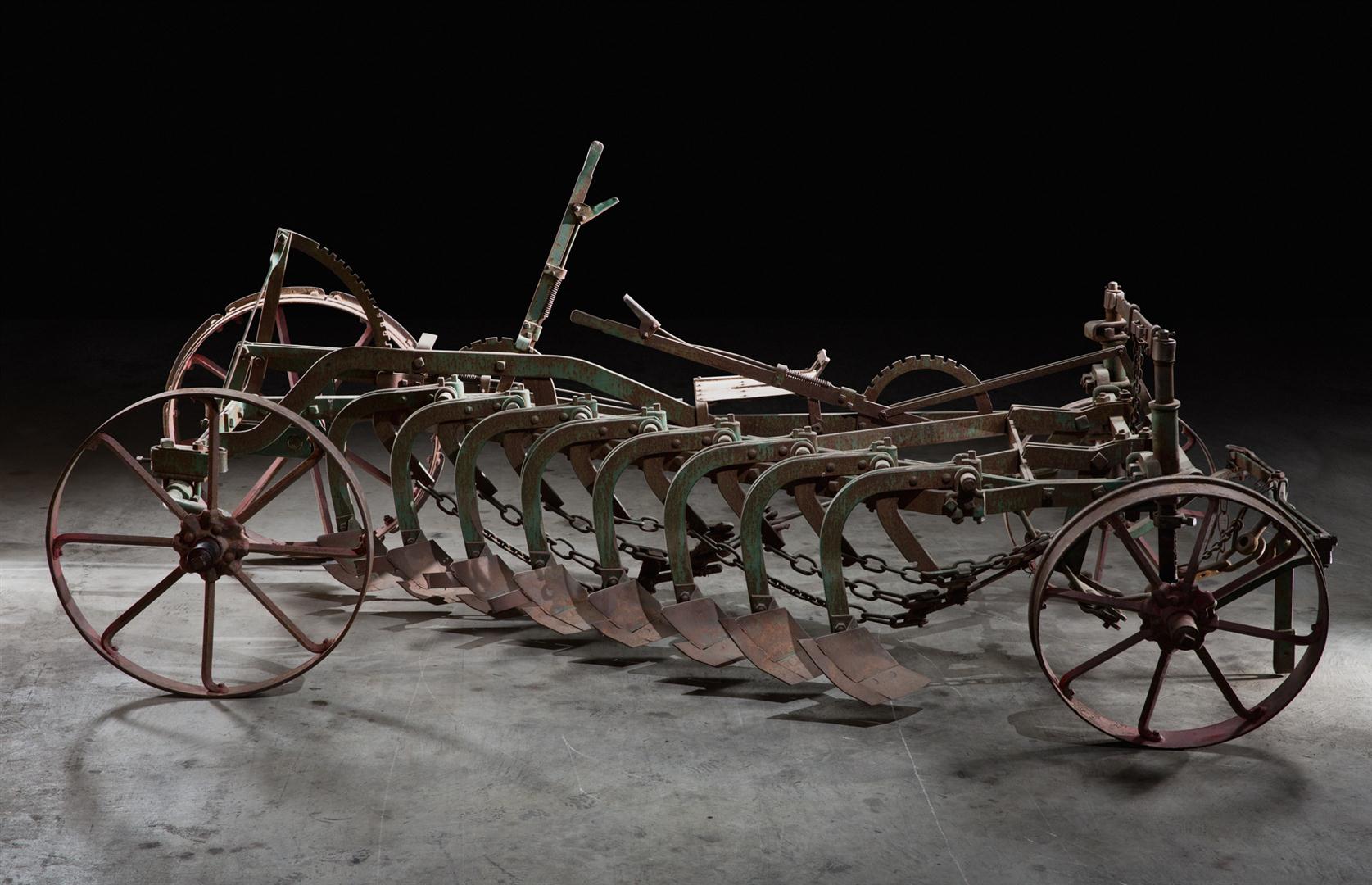
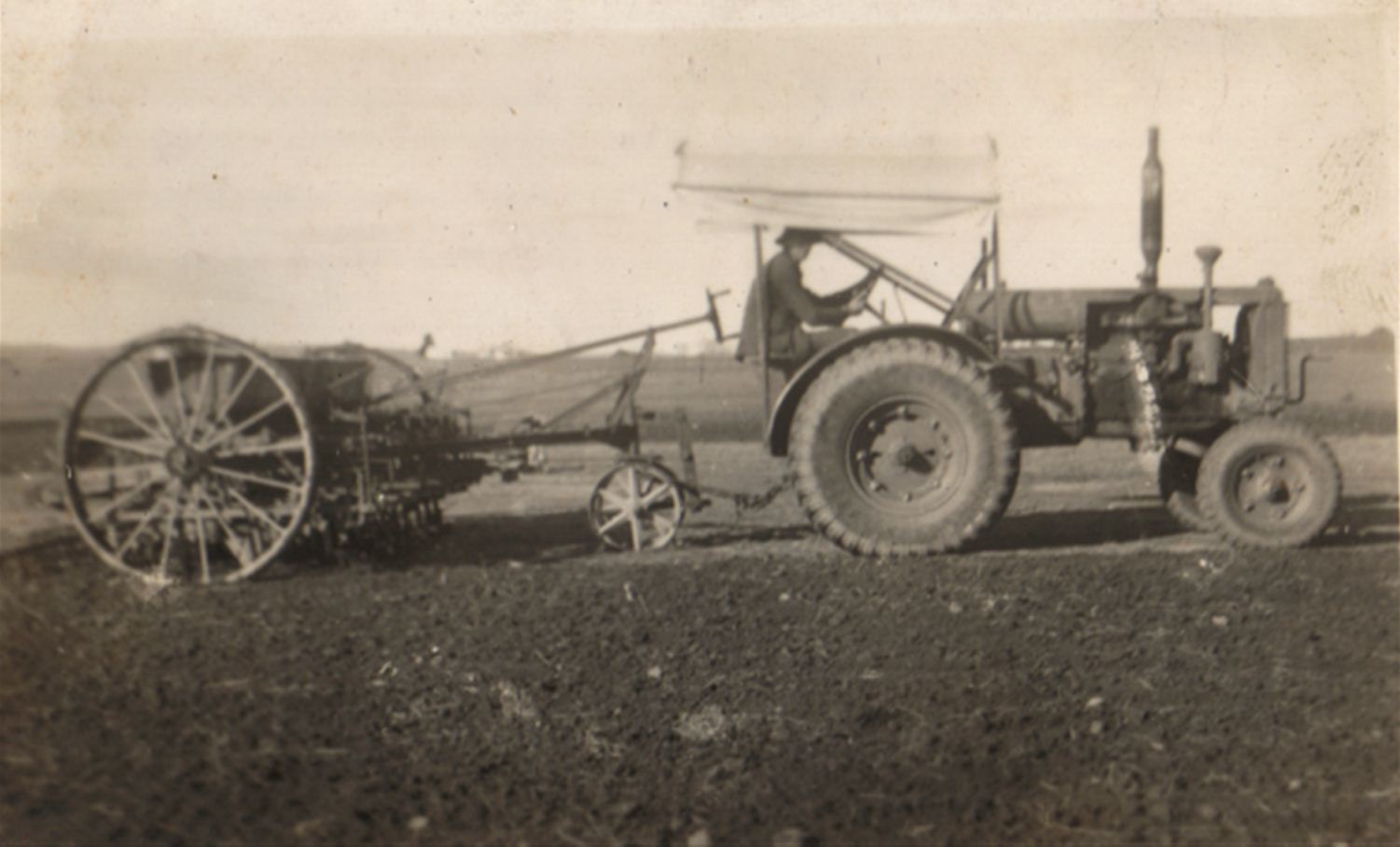

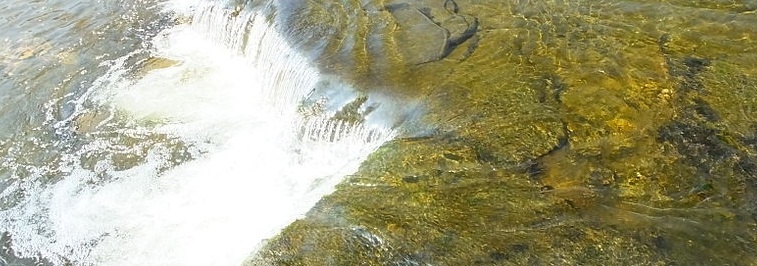
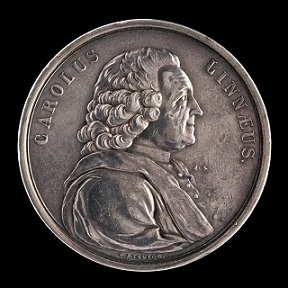


I find it interesting how much the farming process has been simplified with agricultural machinery like this. Long gone are the times when a farmer needed to dig up loose soil and place seeds by hand. Now we have machines like the scarifier to dig up the dirt. And then you can modify it to put seeds in, too! It’s great to see how far we’ve come. Thanks for sharing!